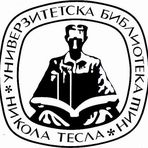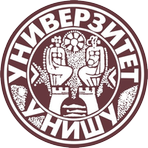Title
Provera validnosti Le Belovog dvodimenzionalnog modela sujete u Srbiji
Creator
Kostić, Senka M., 1990-
CONOR:
21422951
Copyright date
2022
Object Links
Select license
Autorstvo-Nekomercijalno-Bez prerade 3.0 Srbija (CC BY-NC-ND 3.0)
License description
Dozvoljavate samo preuzimanje i distribuciju dela, ako/dok se pravilno naznačava ime autora, bez ikakvih promena dela i bez prava komercijalnog korišćenja dela. Ova licenca je najstroža CC licenca. Osnovni opis Licence: http://creativecommons.org/licenses/by-nc-nd/3.0/rs/deed.sr_LATN. Sadržaj ugovora u celini: http://creativecommons.org/licenses/by-nc-nd/3.0/rs/legalcode.sr-Latn
Language
Serbian
Cobiss-ID
Theses Type
Doktorska disertacija
description
Datum odbrane: 31.05.2023.
Other responsibilities
član komisije
Lakić, Siniša
član komisije
Pedović, Ivana
Academic Expertise
Društveno-humanističke nauke
University
Univerzitet u Nišu
Faculty
Filozofski fakultet
Group
Departman za psihologiju
Alternative title
Verification of the validity of lebel's two-dimensional model of vaniti in Serbia
Publisher
[S. Kostić]
Format
230 str.
description
Bibliografija: str. 177-203
description
Psychology
Abstract (en)
LeBel constructed a Vanity Scale that measures two dimensions: Excessive Physical View and Excessive Abilities View. The main goal of the research was to adapt LeBel's Vanity Scale for the Serbian language, as well as to check the scale's external validity. In addition, we were also interested in whether the dimensions of vanity are mediators of the relationship between pathological narcissism, perfectionism, public self-absorption, and hubristic pride, on the one hand, and stress coping strategies that focus on emotions and avoidance, on the other. The dissertation is organized into three separate studies.
The results of the first survey, on a convenient sample of 617 respondents (370 female persons; M = 34 years old), indicate that there is an equivalence of measurement units between the two versions of the Vanity Scale. The Vanity Scale in Serbian consists of 22 items and measures two dimensions. The reliability of the dimension Excessive Physical View is α = .770, and of the dimension Excessive Abilities View is α = .785. The results of the following research, which was conducted on a convenient sample of 518 respondents (216 male persons; M = 28.99 years old), indicate that the Excessive Physical View as a dimension of vanity is negatively correlated with Honesty–Humility, Emotionality, Depression, and Anxiety; and positively with Extraversion, Conscientiousness, and Openness to Experience. The other dimension of vanity, Excessive Abilities View, is positively correlated with Honesty–Humility, Emotionality, and Anxiety; and a negative correlation was found with Extraversion, Conscientiousness, Openness to Experience, and global Self-Esteem. The last research was conducted on a convenient sample of 510 respondents (264 female persons; M = 31.89 years). The results of the research indicate that the Excessive Physical View can be a mediator of the relationship between maladaptive perfectionism, pathological forms of narcissism, public self-absorption, and hubristic pride, on the one hand, and avoidance coping with stress, on the other hand.
From all of the above, we can conclude that the Serbian adaptation of the Vanity Scale is a reliable and a valid measure of the two dimensions of vanity. In addition, the assumption that vanity is a maladaptive construct is not complete confirmed.
Authors Key words
Sujeta, Osobine ličnosti, Narcizam, Perfekcionizam, Javna samookupiranost, Ponos
Authors Key words
Vanity, Personality traits, Narcissism, Perfectionism, Public self-absorption, Pride
Classification
159.923.072(043.3)
Subject
S 260
Type
Tekst
Abstract (en)
LeBel constructed a Vanity Scale that measures two dimensions: Excessive Physical View and Excessive Abilities View. The main goal of the research was to adapt LeBel's Vanity Scale for the Serbian language, as well as to check the scale's external validity. In addition, we were also interested in whether the dimensions of vanity are mediators of the relationship between pathological narcissism, perfectionism, public self-absorption, and hubristic pride, on the one hand, and stress coping strategies that focus on emotions and avoidance, on the other. The dissertation is organized into three separate studies.
The results of the first survey, on a convenient sample of 617 respondents (370 female persons; M = 34 years old), indicate that there is an equivalence of measurement units between the two versions of the Vanity Scale. The Vanity Scale in Serbian consists of 22 items and measures two dimensions. The reliability of the dimension Excessive Physical View is α = .770, and of the dimension Excessive Abilities View is α = .785. The results of the following research, which was conducted on a convenient sample of 518 respondents (216 male persons; M = 28.99 years old), indicate that the Excessive Physical View as a dimension of vanity is negatively correlated with Honesty–Humility, Emotionality, Depression, and Anxiety; and positively with Extraversion, Conscientiousness, and Openness to Experience. The other dimension of vanity, Excessive Abilities View, is positively correlated with Honesty–Humility, Emotionality, and Anxiety; and a negative correlation was found with Extraversion, Conscientiousness, Openness to Experience, and global Self-Esteem. The last research was conducted on a convenient sample of 510 respondents (264 female persons; M = 31.89 years). The results of the research indicate that the Excessive Physical View can be a mediator of the relationship between maladaptive perfectionism, pathological forms of narcissism, public self-absorption, and hubristic pride, on the one hand, and avoidance coping with stress, on the other hand.
From all of the above, we can conclude that the Serbian adaptation of the Vanity Scale is a reliable and a valid measure of the two dimensions of vanity. In addition, the assumption that vanity is a maladaptive construct is not complete confirmed.
“Data exchange” service offers individual users metadata transfer in several different formats. Citation formats are offered for transfers in texts as for the transfer into internet pages. Citation formats include permanent links that guarantee access to cited sources. For use are commonly structured metadata schemes : Dublin Core xml and ETUB-MS xml, local adaptation of international ETD-MS scheme intended for use in academic documents.


